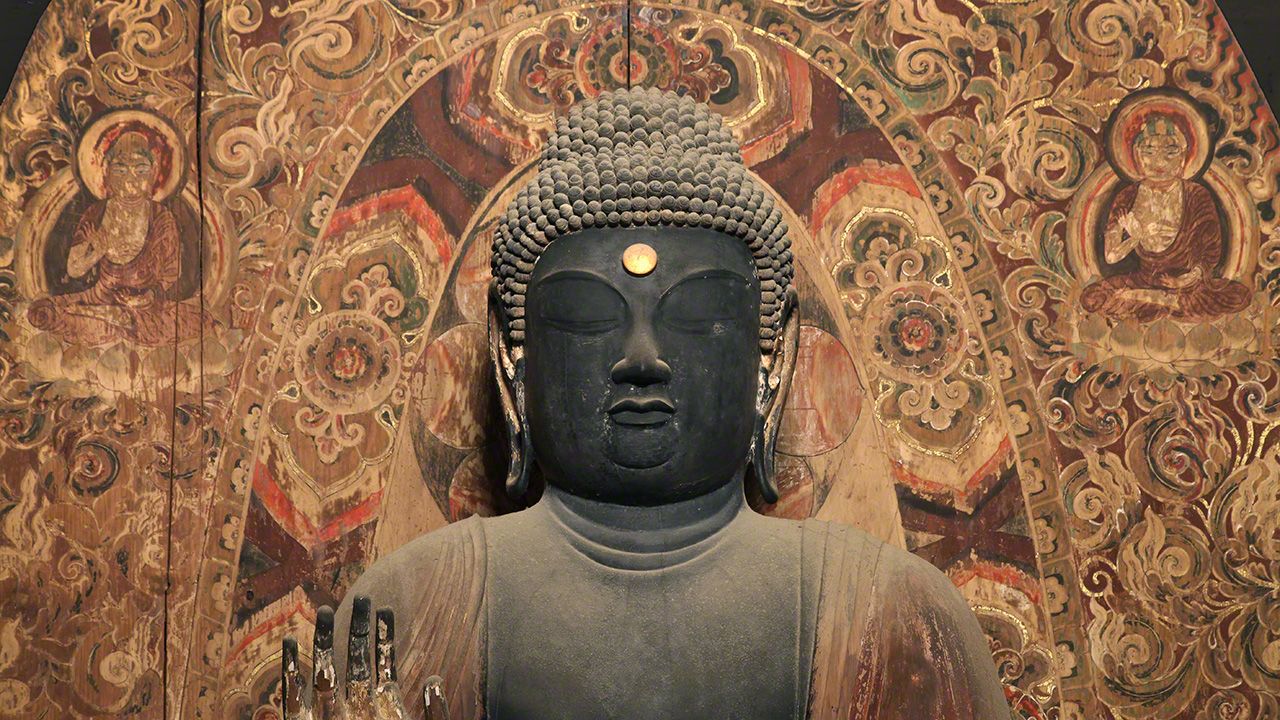
Standing Image of Shakyamuni Buddha (Murōji)
Images Arts Culture- English
- 日本語
- 简体字
- 繁體字
- Français
- Español
- العربية
- Русский
Looking at the serene expression, you almost forget to blink. Something about the sculpture’s facial features exerts an entrancing effect, seeming to hold you transfixed.
This standing image of Shakyamuni (the historical Buddha) is the central image in the Kondō (Golden Hall) at the temple Murōji in Uda, Nara Prefecture. The temple is located in a tranquil, evocative mountainside setting, far from the swirling rush of the profane world. At the main gate stands a stone marker with an inscription describing the temple as Nyonin Kōya, or the “Mount Kōya of women.” Like many Buddhist temples, the famous temple complex on Mount Kōya in Wakayama Prefecture, which serves as the head temple of the Shingon sect of esoteric Buddhism, was accessible to men only for most of its history. Murōji, by contrast, opened its doors to both sexes as far back as the Kamakura Period (1185–1333). Women make up 80% of visitors even today.
The first place of worship on the site is said to have been established in 681 by En no Ozuno (En no Gyōja), the mystic who founded the ascetic shugendō tradition during the Asuka period (593–710). Toward the end of the Nara period (710–94), a group of senior Buddhist monks prayed here for the recovery of Prince Yamabe (later the Emperor Kanmu, r. 781–806), who was suffering from a serious illness. When the prayers proved effective, the priest Kenkei, abbot of Kōfukuji in Nara, commissioned his disciple Shūen to construct a new temple precinct here on orders from the emperor. Originally, therefore, the temple was a subsidiary temple of Kōfukuji associated with the “Consciousness-Only” school.
In the early Heian Period (794–1185), the monk Shintai, a disciple of Kūkai (the founder of Shingon Buddhism in Japan) who was close to Shūen, joined the temple. Important buildings were added at this time, including the Kanjōdō that now serves as the temple’s main prayer hall (originally used for Shingon initiation ceremonies) and the Mieidō, built to revere Kūkai as the founder of the Shingon school. During the Edo Period (1603–1868), the temple developed as a center for mountain asceticism, and became known as a center of the Shingon school with a mystical, esoteric orientation.
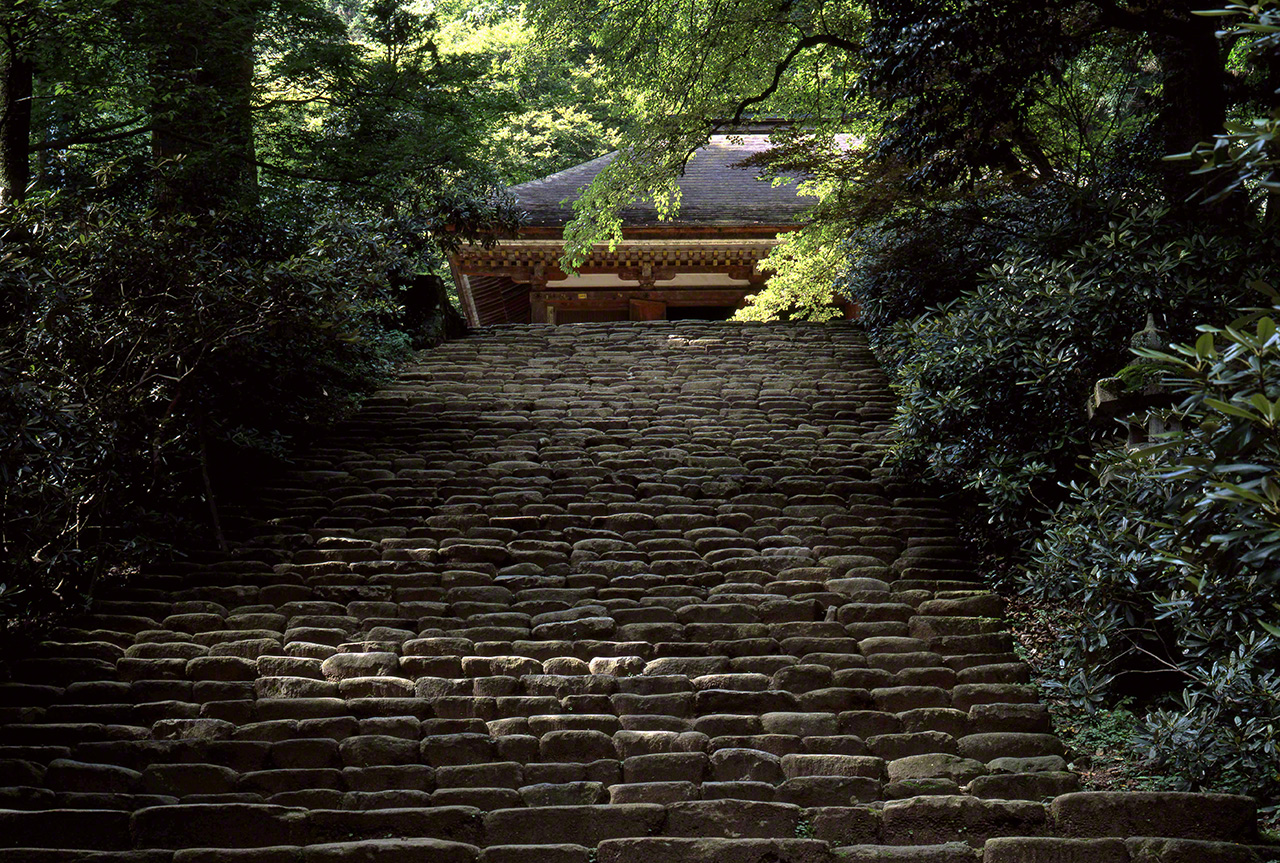
The Yoroi-zaka (armor slope) that leads to the Kondō, where the standing image of Shakyamuni is housed. (© Muda Tomohiro)
This image of Shakyamuni, clad in a thin robe and standing with a serene expression on his face, was made during the early Heian Period (794-1185) from a single block of kaya (Japanese torreya, Torreya nucifera). The concentric rippling lines centered on the Buddha’s knees depict a robe known as an emon. At the time, the normal practice was to alternate large and small folds, but this image uses a different pattern in which two small creases appear between each large fold. This distinctive “ripple” style, unique to Murōji, helps give the image a smoother, more delicate texture and weight.
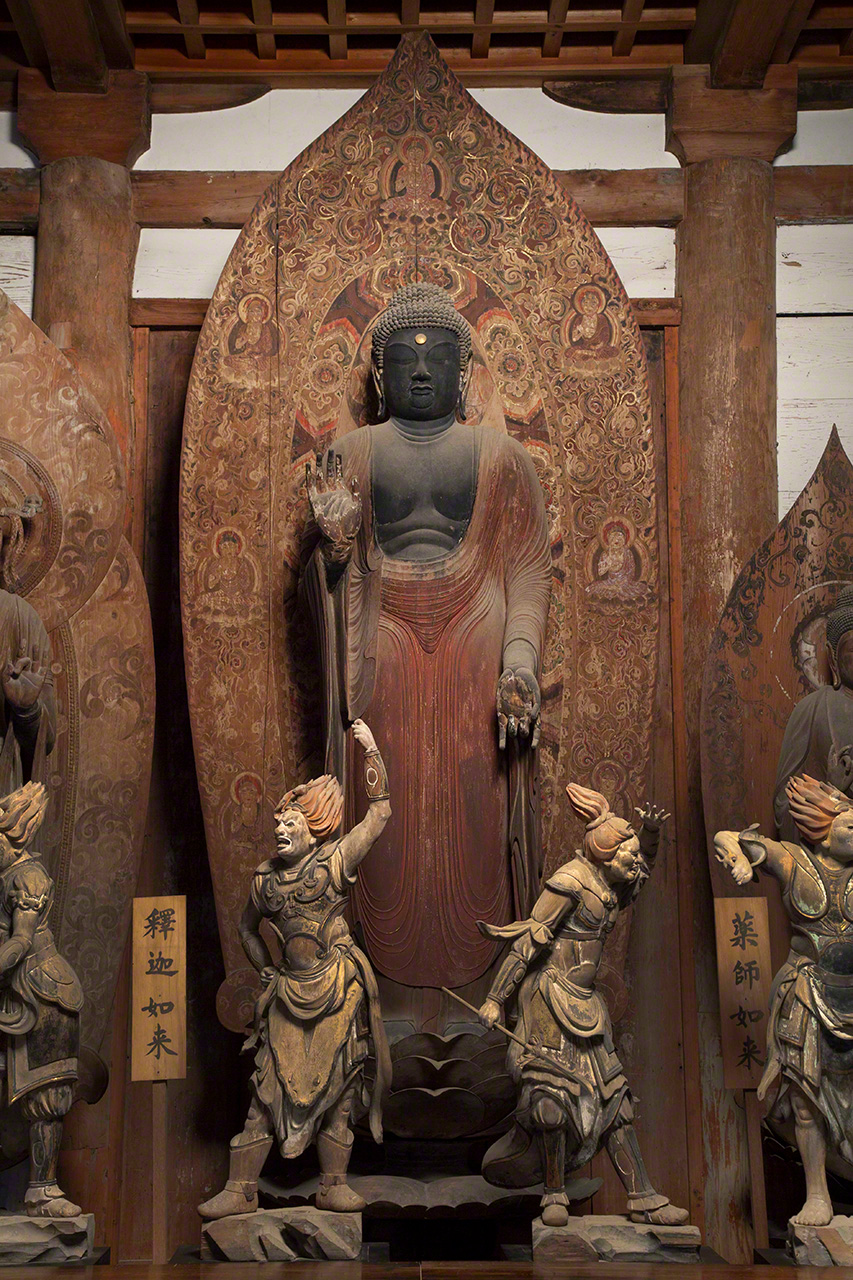
(© Muda Tomohiro)
The aureola (kōhai), or large halolike backing that surrounds the torso, symbolizing the light emanating from the Buddha, was often a relatively simple affair, with patterns carved into the surface of a wooden board. The image at Murōji, by contrast, is surrounded by a massive aureola consisting of impressively decorated panels that come to a combined more than two meters in length, painted with lotus flower patterns and seven pictures of Yakushi Nyorai (Bhaiṣajyaguru), the Buddha of healing and medicine. The image fills the viewer with a sense of awesome dignity and depth—like looking at a mandala.
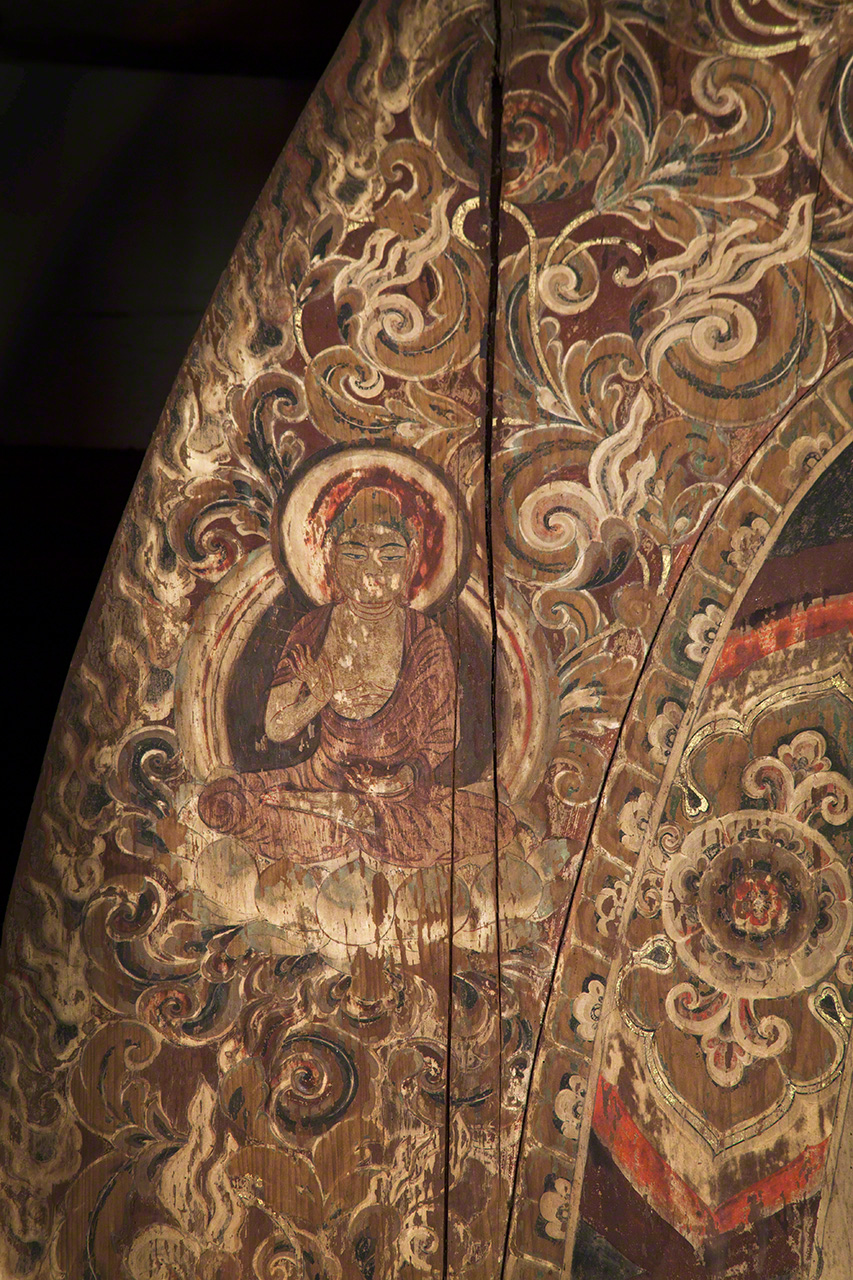
(© Muda Tomohiro)
Although tradition claims that the image represents Shakyamuni, records suggest that it was originally a statue of Yakushi Nyorai, unusually depicted without the yakko medicine jar that is his customary identifying attribute. It therefore stands to reason that the statue is accompanied by the 12 Heavenly Generals, who normally serve as a guard of honor for the Buddha of Medicine.
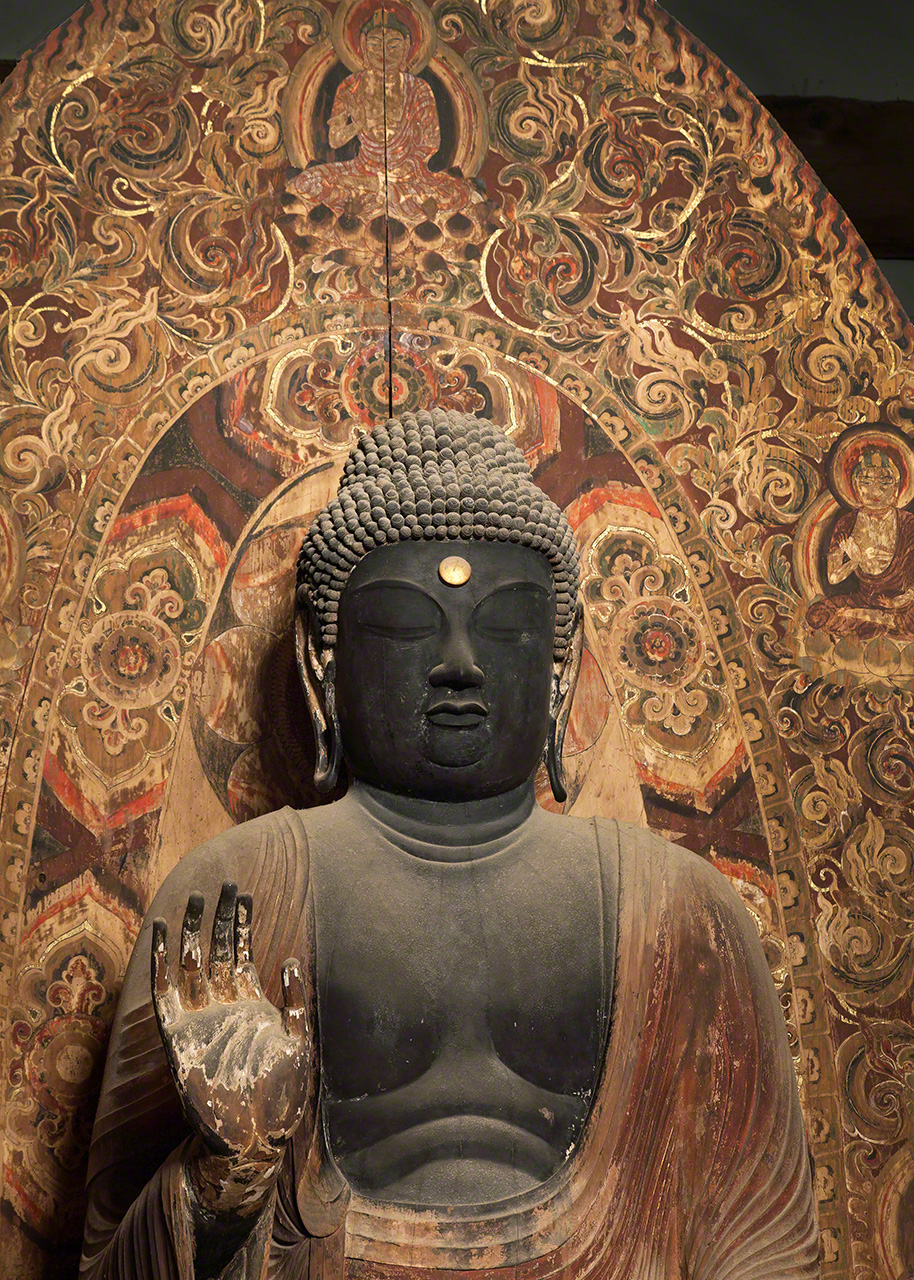
(© Muda Tomohiro)
Central Standing Image of the Shakyamuni Buddha
- Size: 234.8 centimeters
- Date: Early Heian Period
- Murōji (Nara Prefecture)
- National treasure: Registered as “Wooden standing image of the Shakyamuni Buddha” (Kondō Hall)”
(Originally published in Japanese. Banner photo: Murōji’s standing image of the Shakyamuni Buddha. © Muda Tomohiro.)

